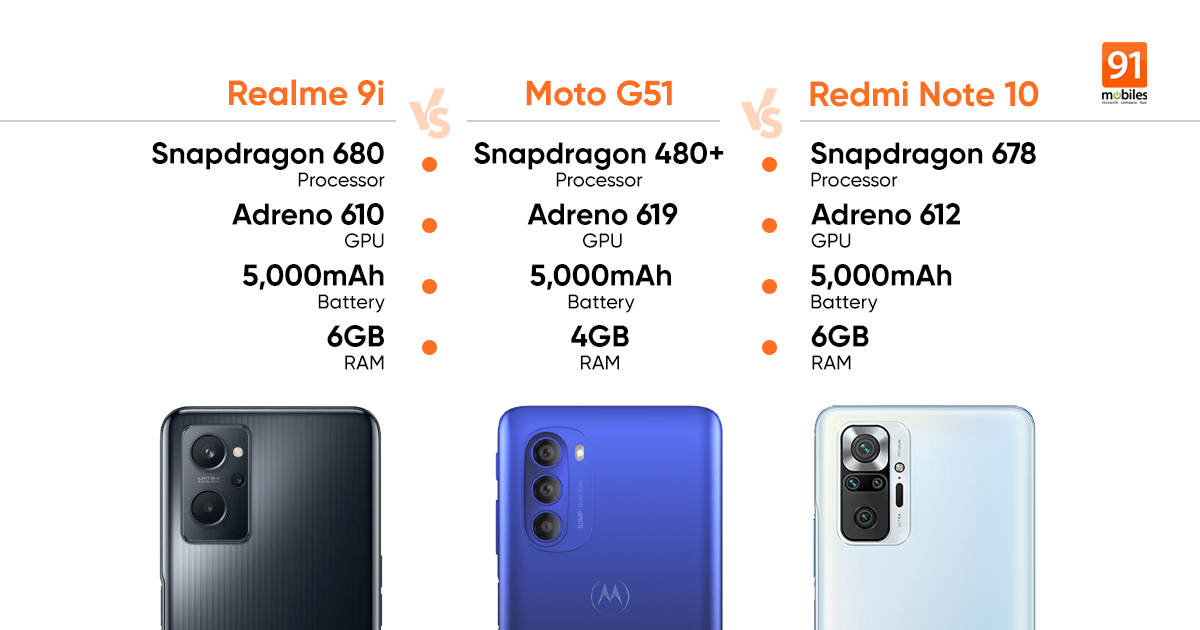
The Realme 9i (review), priced at Rs 13,999, is the first phone of 2022 from Realme. In my own detailed review of the device, I concluded that the 9i had many traits of previous Realme phones but could have been better as far as processing capabilities are concerned. The handset makes use of the new Qualcomm Snapdragon 680 chipset that has a 6nm fabrication and a maximum clock speed of 2.4GHz. Given how crowded the affordable smartphone space is and the multitude of options that exist, choosing one isn’t an easy task. To simplify things, I have chosen two competitors to the Realme 9i which challenge the device in terms of benchmarks, gaming, and general performance. The first is the slightly old but very popular device Redmi Note 10 (review) while the second is a recent entry into the market, the Moto G51 (review). Both the phones are priced close to the Realme 9i and also feature different chipsets from Qualcomm.

In the case of Redmi’s Note 10, Qualcomm has supplied the Snapdragon 678 SoC which is an octa-core chipset running two Kryo 460 Gold performance cores at 2.2GHz and six efficiency Kryo 460 Silver cores at 1.7GHz. The 480+ that powers the Moto G51 also has the same specs but it is made using an 8nm process as compared to the Snapdragon 678’s 11nm. This also enables a lower TDP on the former at 3W while the latter is at 6W. As for the Snapdragon 680, the architecture is slightly different with four Kryo 265 Gold performance cores spinning at 2.4Ghz and four Kryo 265 Silver efficiency cores at 1.8GHz. Let’s see how they perform in various benchmarks.
Table of Contents
Geekbench 5
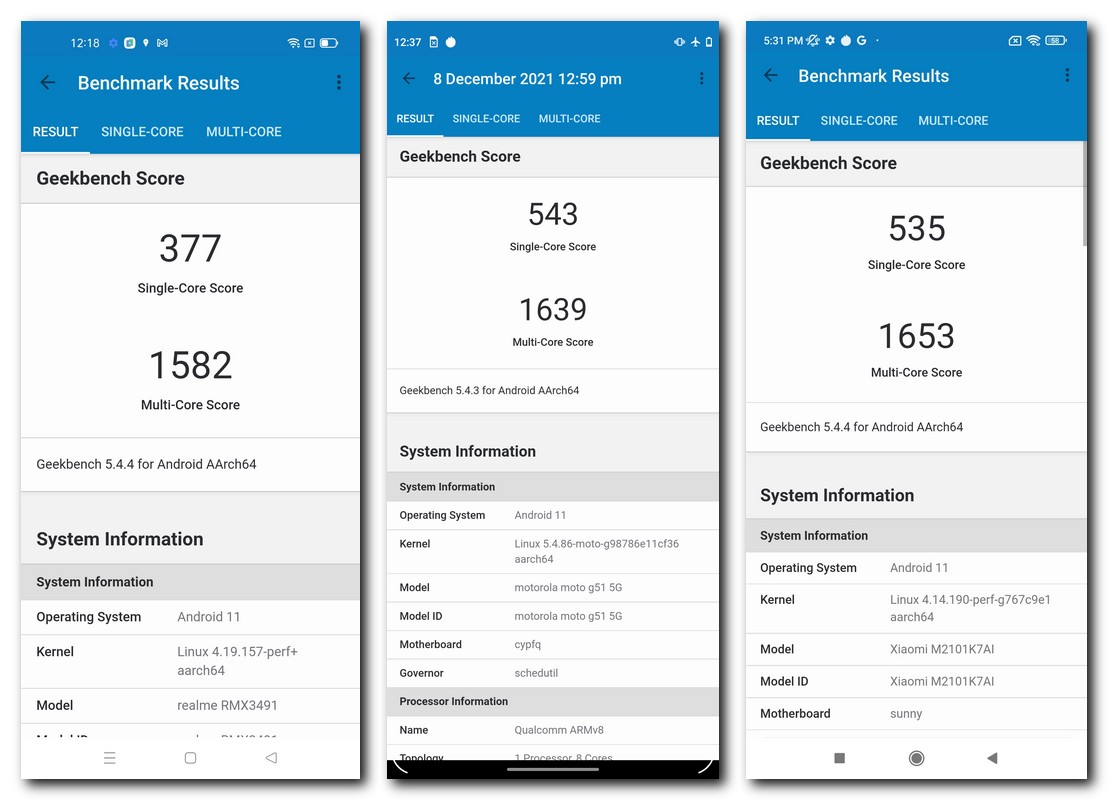
On this CPU-centric benchmark, the Realme 9i delivers a multi-core and single-core result of 377 and 1,582. The Moto G51 gets 543 and 1,639 respectively while for the Redmi Note 10 the results were 525 and 1,635. On the whole, the multi-core aspect of all three devices remains about the same with marginal differences. However, the single-core score cannot be pushed aside since the Realme 9i underperforms by a margin of nearly 30 percent as compared to the Moto G51. It may have something to do with the better Kryo 460 CPUs being employed on both the G51 and Redmi Note 10 while the Realme 9i has to contend with the older Kryo 265.
Antutu V9.2.6
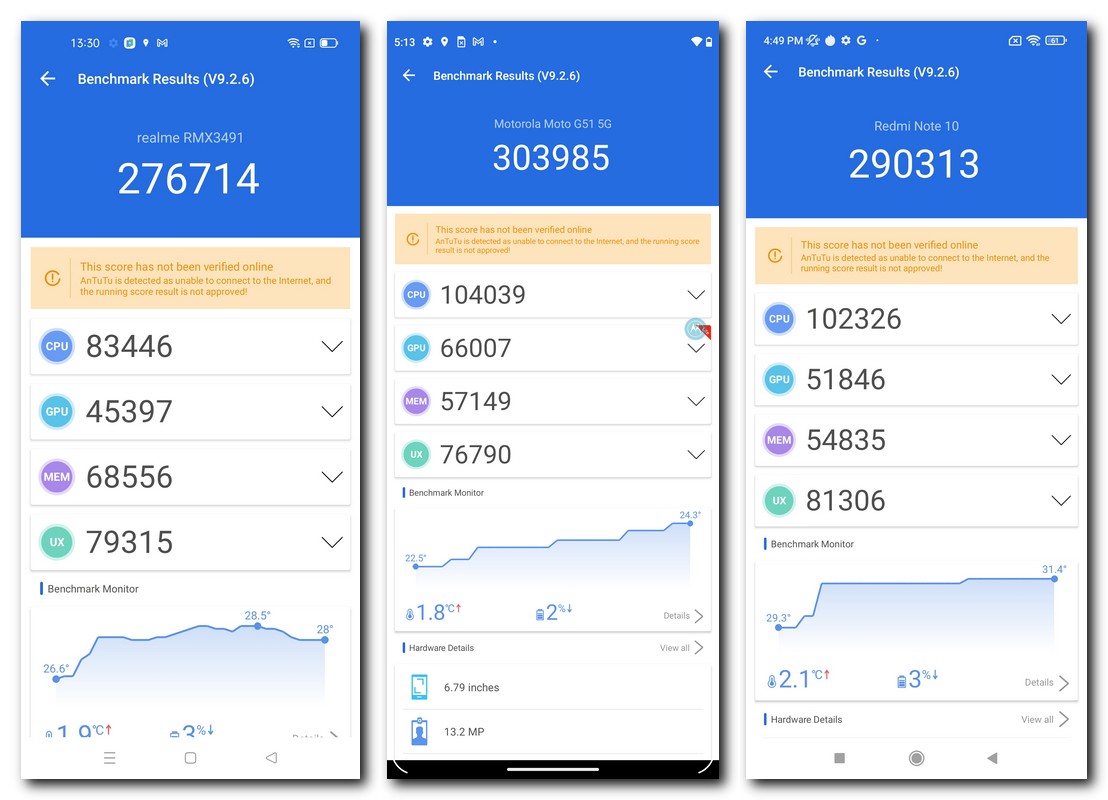
While Geekbench 5 mainly tests the compute strength of the chipset, Antutu takes a holistic approach by adding GPU, Memory, and UX score as well. Both the Redmi Note 10 and Realme 9i come with 6GB of RAM while the Moto G51 has 4GB. All devices are running on Android 11. As far as the GPU is concerned, Realme 9i’s Snapdragon 680 has an Adreno 610 while the Snapdragon 678 on the Redmi Note 10 uses the Adreno 612. The Moto G51 and its Snapdragon 480+ have the Adreno 619 handling graphics. I ran the Antutu test about five times on each device at 10-minute intervals and these are the scores. The Realme 9i gets an average overall score of 276,714 while the respective scores on the Note 10 and G51 were 290,313 and 303,985. Again the Realme 9i is placed at the bottom with its score being about 10 percent below the leader G51. The battery drop and temperature gains across the three devices remained the same.
3DMark
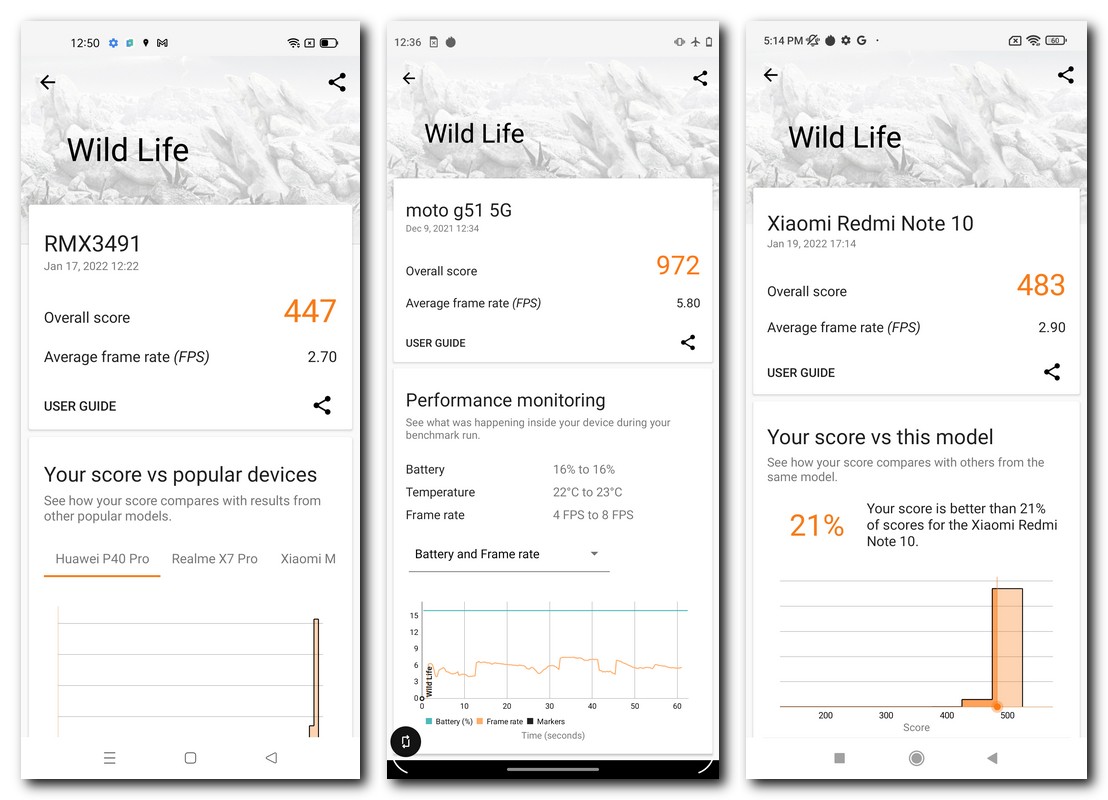
To get a more consistent idea of graphical capabilities on mobile devices, 3DMark’s WildLife test serves as a good option. The Realme 9i’s overall score was 447 with an average frame rate of 2.70fps. The results for Redmi Note 10 were 483 with an average frame rate count of 2.90 while for the Moto G51 the figures were 972 and 5.80fps. It seems quite clear again that the Moto G51 is the winner and absolutely demolishes the scores obtained by both the Realme 9i and Redmi Note 10.
CPU Throttle
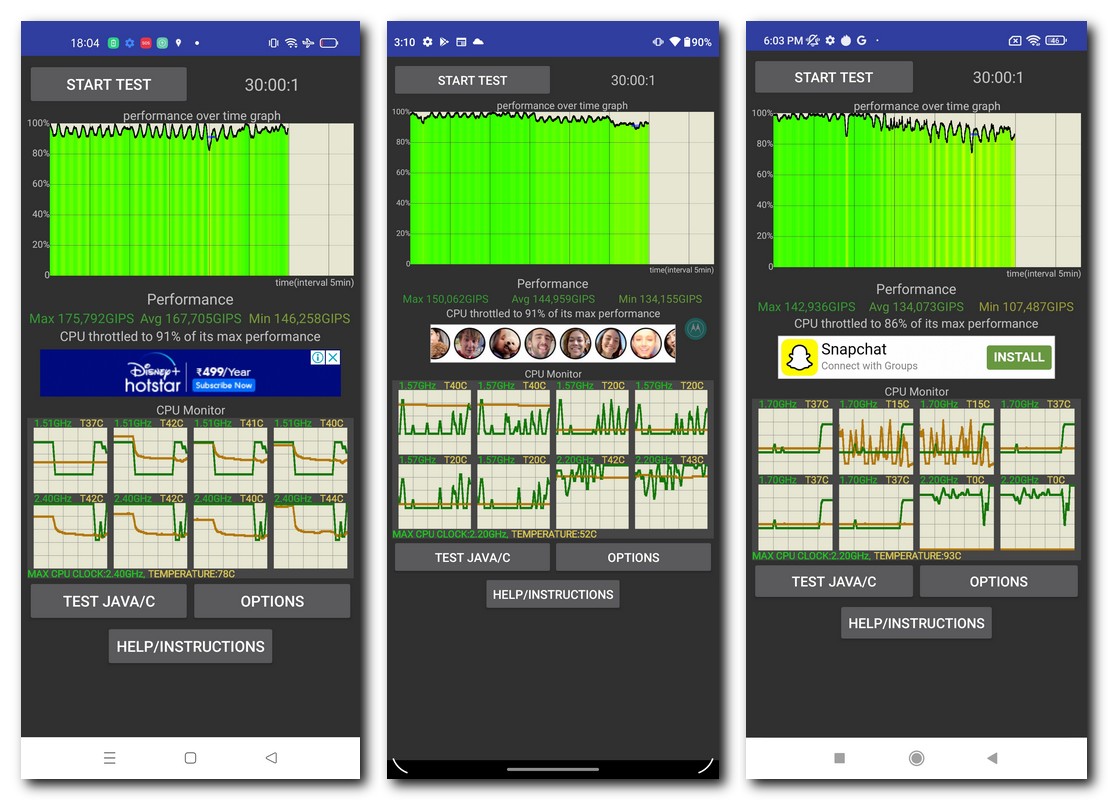
It’s pertinent to know to what extent the CPU performance can be relied upon when the chipset is under continuous load. The CPU Throttle test stresses the CPU for 30 minutes and maps out the drop in peak performance. For the Realme 9i, peak performance dropped to about 80 percent at one point and swung between 90-100 percent for most of the test. In the case of the Redmi Note 10, the CPU performance was consistently below 90 percent after the 15-minute mark and dropped up to 75 percent. The Moto G51 ran the smoothest of the lot with the lowest peak performance at 90 percent. In terms of CPU temperatures, the Redmi Note 10 flared up to 92°C after the 30 minutes were up and the Realme 9i didn’t fare too well either at 78°C. The Moto G51, on the other hand, maintained a relatively cool 52°C.
BGMI Gaming
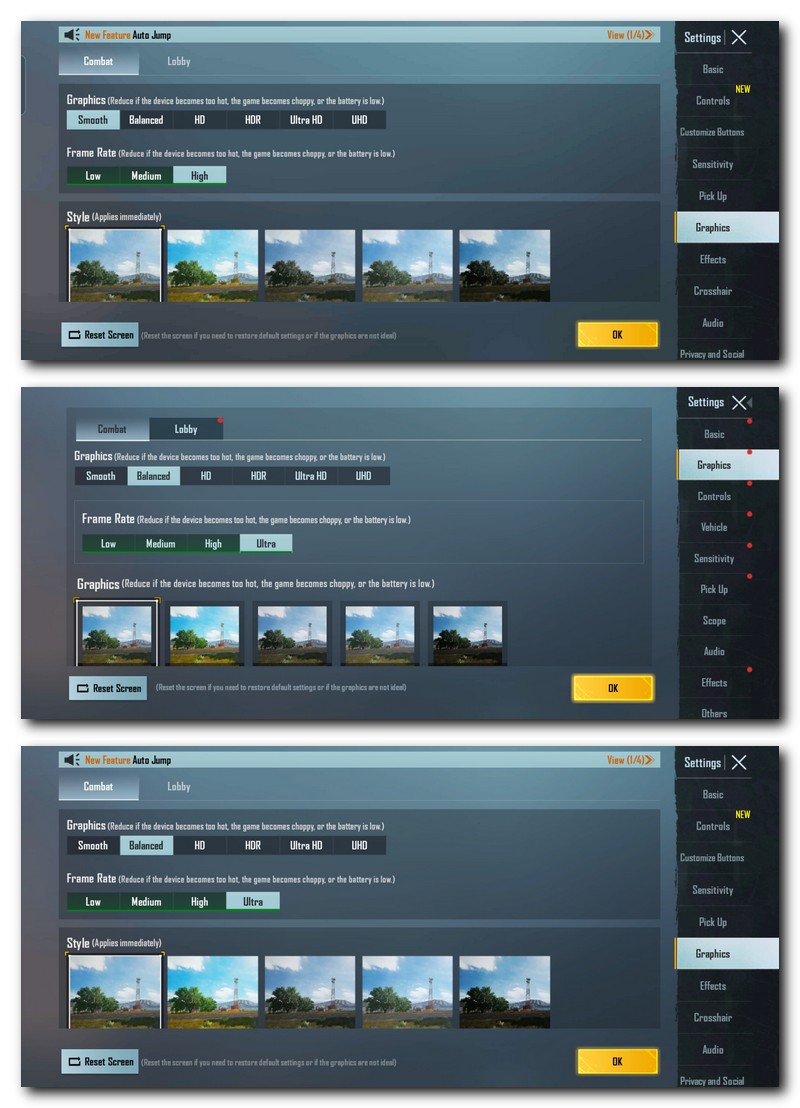
I ran the popular Battle-Royale title BGMI on all three phones at the maximum possible frame rate permissible and adjusted the graphics quality accordingly. The Realme 9i had by far the worst experience with the highest FR available being High (30fps) paired with the lowest graphics settings Smooth. On the Redmi Note 10, I got Ultra FR (45fps) with Balanced graphics and the Moto G51 also had the same. All three phones have a 5,000mAh battery. During my 30 minutes of gameplay, the Realme 9i started out smoothly but started dropping frames in the last 10 minutes. Battery levels depreciated by 7 percent and the temperature rose by 9°C. The Moto G51 maintained a constant frame output throughout the test and dropped 8 percent battery while gaining 8°C. Redmi Note 10 behaved in an erratic fashion with an overall decent fps count interspersed by sporadic drops in frames. The device dropped about 9 percent battery and gained 10°C.
Final verdict
I think it can be sufficiently concluded that the Realme 9i is not a performance-oriented device even for an affordable smartphone. It scores below its competitors and doesn’t pack in the GPU capabilities that a lot of young users are looking for. Of course, the smartphone experience does not depend only on the processing prowess and those considering the Realme 9i should keep in mind that the device also offers a good display, decent cameras, and fast charging speeds.








![[Exclusive] Realme 9i 5G not launching in India anytime soon: Madhav Sheth Thumbnail](https://www.91-cdn.com/hub/wp-content/uploads/2022/01/realme-9i-4g-image-feat.png?tr=h-110,q-100,pr-true)



